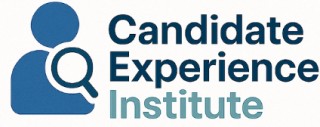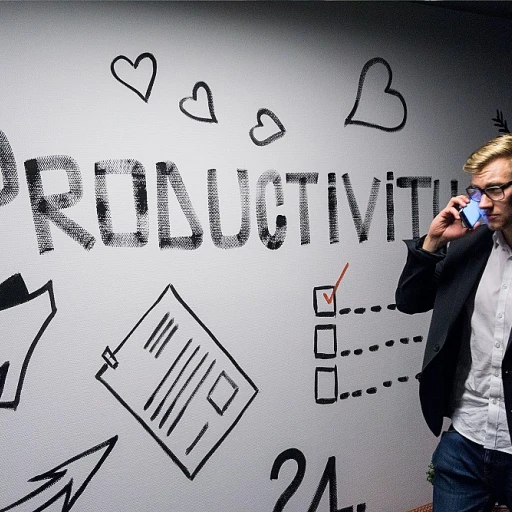
Understanding the Store Onboarding Process
Exploring the Onboarding Pathway
Embarking on the retail onboarding journey is a pivotal moment, marking the beginning of a new hire's integration into the company. The onboarding process plays a critical role not only in welcoming employees but also in setting the foundation for their future success and engagement with the business. As the retail industry continues to evolve, an effective onboarding strategy becomes even more essential to meet these dynamic challenges.
One of the main goals of onboarding is to ensure that new retail employees are not only informed but also feel comfortable and confident to perform their jobs. The process should be comprehensive, encompassing an enhanced integration process that aligns with the company's culture and objectives. By doing so, employees develop a sense of belonging and purpose from the very first day.
To start, outline a clear onboarding checklist that addresses both administrative and experiential components. This checklist should guide new hires through the necessary paperwork, introductions to team members, and familiarization with the store layout and safety procedures. More importantly, it should emphasize the company culture and values that underpin the retail experience.
In order to support long-term retention and employee satisfaction, the onboarding process should be well-rounded, incorporating elements from training programs and providing ample opportunities for feedback. This structured yet flexible approach fosters a positive and welcoming atmosphere, encouraging employees to engage actively with their roles and colleagues.
Retail businesses must remember that onboarding extends beyond the first weeks of employment. Regular check-ins, as part of continuous onboarding, provide ongoing support and reassurance to team members. This ongoing relationship-building contributes significantly to a memorable and impactful onboarding experience, ultimately enhancing employees' performance and strengthening customer service outcomes.
The Role of Communication in Onboarding
Effective Communication Strategies
In the retail industry, communication is a cornerstone of the onboarding process. It ensures that new hires are not only informed but also feel welcomed and valued from day one. Effective communication helps bridge the gap between the company culture and the expectations of the new employees, setting the stage for a successful onboarding experience.
Clear and consistent communication from the store manager and the team is crucial. This begins with a well-structured onboarding checklist that outlines the key stages of the process, from initial introductions to detailed job training. It’s important for new retail employees to understand their roles and responsibilities clearly, as well as the company's goals and values.
Building a Supportive Environment
Creating a supportive environment is vital for new hires to thrive. Regular check-ins and open lines of communication can help address any concerns or questions that arise during the onboarding program. This support not only aids in the immediate adjustment period but also contributes to long-term employee satisfaction and retention.
Feedback mechanisms are another critical component. Encouraging new employees to share their experiences and suggestions can lead to continuous improvement in the onboarding process. This feedback loop helps the company adapt and refine its strategies to better meet the needs of its retail employees.
Leveraging Technology for Better Communication
Technology can play a significant role in enhancing communication during onboarding. Utilizing tools such as virtual job tryouts can provide new hires with a realistic preview of their roles, helping them feel more prepared and confident. This approach not only enhances the onboarding experience but also aligns with best practices in employee training and development.
For more insights on how virtual job tryouts can enhance candidate experience, visit Enhancing Candidate Experience Through Virtual Job Tryouts.
Personalizing the Onboarding Experience
Customizing Onboarding for Each Role
Personalizing the onboarding experience is crucial for new hires in the retail industry as it can significantly affect their engagement and retention. This customization begins by considering the unique needs of each role, such as a sales associate focus on customer service and product knowledge, while a store manager might need a deeper understanding of company culture and leadership strategies. An individualized onboarding checklist for retail employees can help address specific requirements and expectations from day one. It ensures that each employee receives the necessary support and training, tailored to their job's responsibilities. By doing so, the business demonstrates its commitment to setting employees up for long-term success.Recognizing Employee Differences
Each team member brings unique skills and backgrounds to the company. Effective onboarding requires acknowledging these differences and integrating employee experiences flexibly into the existing retail onboarding program. Customizing check-ins and training sessions to match individual learning speeds and modes can enhance the onboarding process. Moreover, allowing employees to voice their thoughts and ideas during these sessions fosters an inclusive environment and encourages continuous improvement in the onboarding experience. The process should always evolve to meet new challenges and adapt to changes in the retail industry.Utilizing Technology for a More Personalized Experience
Incorporating technology can streamline the retail onboarding process, making it more efficient and personalized. Tools that track employee progress and provide immediate feedback help new hires understand their development areas and receive timely support from their teams. By leveraging such technological solutions, companies can ensure that the onboarding experience remains consistent yet adaptable, fostering a culture of growth and collaboration. Using platforms that allow employees to learn at their own pace and revisit training content as needed enhances the onboarding journey significantly. For further insights into how communication affects onboarding, you may explore this effective approach that emphasizes open and clear dialogue between new hires and the organization.Training and Development in Onboarding
Investing in Skill Development and Knowledge Transfer
An effective onboarding process in the retail industry places great emphasis on robust training and development strategies. A proficient training framework ensures that new hires quickly adapt to their roles, reducing time to proficiency and increasing productivity, which benefits the business and customers alike. The goal of onboarding retail employees is to equip them with the necessary skills and knowledge to excel in their positions. This involves a comprehensive training program that addresses various aspects of their job – from understanding company culture and retail operations to mastering customer service and sales techniques. Key to this process is a well-organized onboarding program that includes a structured onboarding checklist, facilitating seamless transitions into the team. Best practices in employee training involve a mix of in-person and digital learning modules, interactive sessions, and shadowing experienced colleagues. This blend ensures that each retail employee receives a well-rounded education while being adequately supported as they familiarize themselves with the store environment. Moreover, employee training should not be a one-day affair but a continuous journey that promotes long-term skill development. Continuous development opportunities ensure that retail employees remain engaged and motivated, leading to higher retention rates and better job performance. Store managers and team leads play a pivotal role in this aspect by conducting regular check-ins and organizing ongoing educational workshops. By fostering an environment of continuous learning and development, companies can provide an enriching onboarding experience that not only supports new hires in their initial days but also prepares them for future opportunities within the company. In this way, businesses create a positive and empowering onboarding experience that aligns with their overall business objectives and enhances employee satisfaction and loyalty.Feedback and Continuous Improvement
Gathering Insights for Continuous Progress
In the retail industry, the importance of fostering continuous improvement through valuable feedback cannot be overstated. Implementing a structured system for collecting feedback from new hires is crucial in refining the onboarding process. Feedback mechanisms should be established to gather insights from various stakeholders involved in the onboarding journey, including the employees themselves, their mentors, and store managers. An effective onboarding program should incorporate regular check-ins. These check-ins provide an opportunity to track employee progress and address any concerns. It's beneficial to create open channels for ongoing communication, ensuring that employees feel supported as they adapt to their new roles. This not only aids in their development but also aids the business in identifying potential gaps or areas for innovation within the onboarding program. To streamline feedback collection, design an onboarding checklist that includes prompts at different stages of the process. This helps in assessing the efficiency of the onboarding strategy from day one through the transition into the full job role. Additionally, gathering feedback can enhance the company culture by fostering a community of growth and openness. Regular feedback not only supports the development of an effective onboarding structure but also reinforces a company’s commitment to team success and customer satisfaction. When retail employees are encouraged to convey their thoughts and experiences, it provides the company with actionable insights. These insights can inform better training practices and retail-specific onboarding strategies. Incorporating feedback loops ensures the onboarding experience remains dynamic and aligned with the evolving expectations of employees and the retail landscape at large. Ultimately, integrating best practices in gathering and utilizing feedback will ensure that the onboarding journey is not only about immediate acclimation but serves as a cornerstone for long-term employee engagement and business vitality. Regular assessment and improvements based on this feedback will undeniably yield a more cohesive and effective onboarding process, leading to a stronger, more equipped team ready to elevate customer experiences in the store environment.Measuring the Success of Onboarding
Evaluating Success with Meaningful Metrics
In the retail industry, assessing the success of the onboarding process involves more than just checking off items on an onboarding checklist. To truly gauge the impact of onboarding on both employees and the company, an organization must make data-driven decisions. Here's how companies can measure the effectiveness of their onboarding programs:- Employee Retention Rates: One of the most telling indicators of a successful onboarding experience is the long-term retention of retail employees. Comparing retention rates before and after implementing onboarding programs can highlight improvements in employee loyalty and engagement.
- Employee Satisfaction: Regular check-ins and surveys provide insight into how employees feel about their onboarding experience. Positive feedback in these areas signals a successful onboarding process that aligns with company culture.
- Training and Development Outcomes: Evaluating the effectiveness of employee training initiatives through time-bound assessments helps in identifying gaps in the process. This not only aids in individual development but also enhances overall customer service and sales strategies.
- Performance Metrics: Newly onboarded employees should be monitored for their contribution to business goals. Metrics such as sales performance, customer interactions, and job proficiency can reveal the impact of onboarding on their ability to deliver on key company objectives.
- Feedback Loop: Establishing a culture of continuous feedback allows for real-time support and adjustment of the onboarding program. By integrating input from both the employees and the team, companies can ensure a dynamic and responsive onboarding experience.













